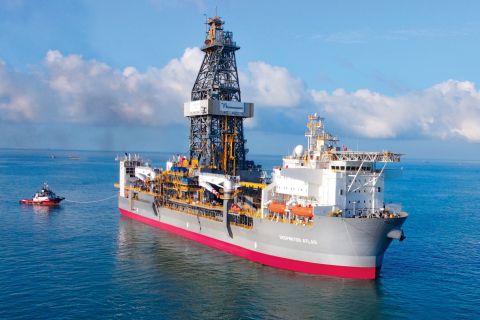The macro outlook for supply and demand of oil and gas is positive for investing in oil and gas equities for the long term, according to analyst Karl Bandtel of Wellington Management Co. LLP. Based in Boston, Wellington has been studying energy equities and overseeing portfolios since 1984, when it began managing Vanguard's Specialized Energy Fund. Today it manages $4.5 billion dedicated to energy investing on behalf of institutional and mutual funds and hedge funds. It invests in companies ranging from ExxonMobil to small-cap independents. "Why would anyone invest in energy? During the next 15 years, according to ExxonMobil, world oil demand is such that we will need to add 100 million barrels of oil equivalent per day. That requires $30 trillion to do so," Bandtel said while in Houston recently. "If we just take the third of China along the coastal plain, and its consumption increases to the amount of Japan and Korea today, which is 16 barrels per capita per year, that would mean the world needs an additional 20 million barrels of oil per day. The only question is a matter of time-will this be in 10 years or 20?" Bandtel's main investment criteria is whether a company can add reserves at a reasonable cost. If a company can do so, that represents a great amount of real value, he said. Equity returns can be impressive. He cited a list of top performers compiled by Southwest Securities. Since December 1999, Ultra Petroleum has returned 1,039% and XTO Energy, 635%. Patina Oil & Gas has returned 612% and Quicksilver Resources, 579%. These are small- or midcap companies growing rapidly. Most emphasize drilling for gas. One thing that concerns him, Bandtel said, is that the cost of finding reserves is clearly up during the past decade, while U.S. oil and gas production is trending down. "That's a big theme, and it is why commodity prices are higher than they've been in the past decade. But it's a mistake to write off the whole U.S. as mature. There are plenty of great plays that deserve capital." He cited the Rocky Mountain coalbed-methane (CBM) plays as an example, along with the Gulf of Mexico deep shelf. CBM production in the U.S. now tops about 4.4 billion cubic feet (Bcf) per day, versus 2.7 Bcf in 1996 and 1.5 Bcf in 1992. In Canada, CBM is just getting started and represents an opportunity for companies, he added. What should E&P companies do with their very strong cash flow? "If you have $500 million of cash flow but only $300 million worth of good prospects that generate the right return, you should only spend $300 million. But if you have more than $500 million of good ideas with the right return, it's OK to borrow." However, he cautioned, when cash flow moves up rapidly in a short period of time, production doesn't always move up commensurately. "A risk for investors like me is [that], if companies do not invest their cash flow well, a company can shed a lot of value quickly."
Recommended Reading
To Dawson: EOG, SM Energy, More Aim to Push Midland Heat Map North
2024-02-22 - SM Energy joined Birch Operations, EOG Resources and Callon Petroleum in applying the newest D&C intel to areas north of Midland and Martin counties.
CEO: Continental Adds Midland Basin Acreage, Explores Woodford, Barnett
2024-04-11 - Continental Resources is adding leases in Midland and Ector counties, Texas, as the private E&P hunts for drilling locations to explore. Continental is also testing deeper Barnett and Woodford intervals across its Permian footprint, CEO Doug Lawler said in an exclusive interview.
Chevron Hunts Upside for Oil Recovery, D&C Savings with Permian Pilots
2024-02-06 - New techniques and technologies being piloted by Chevron in the Permian Basin are improving drilling and completed cycle times. Executives at the California-based major hope to eventually improve overall resource recovery from its shale portfolio.
Rystad: More Deepwater Wells to be Drilled in 2024
2024-02-29 - Upstream majors dive into deeper and frontier waters while exploration budgets for 2024 remain flat.
For Sale, Again: Oily Northern Midland’s HighPeak Energy
2024-03-08 - The E&P is looking to hitch a ride on heated, renewed Permian Basin M&A.





